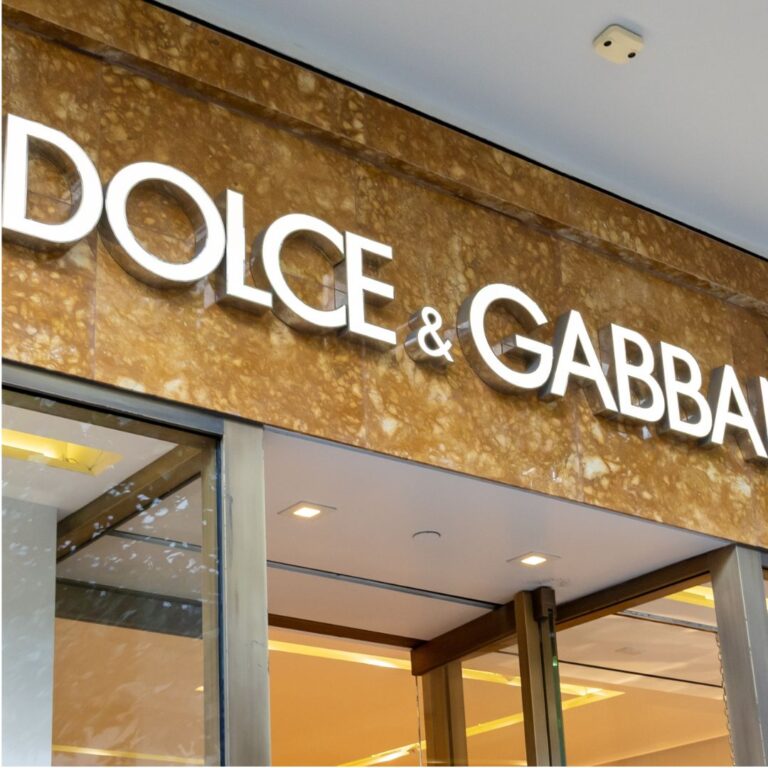Dolce & Gabbana, one of the most iconic fashion houses in the world, represents the epitome of Italian luxury and creativity. Founded in 1985 by designers Domenico Dolce and Stefano Gabbana, the brand quickly rose to prominence, blending traditional Italian craftsmanship with modern, often provocative, aesthetics. Over the decades, Dolce & Gabbana has expanded from a fashion label into a global empire encompassing clothing, accessories, fragrances, and even lifestyle items. This article delves into the fascinating history of Dolce & Gabbana, tracing its evolution from a small design studio to a global fashion powerhouse.
The Founders: Domenico Dolce and Stefano Gabbana
Domenico Dolce was born in Polizzi Generosa, Sicily, in 1958, into a family deeply rooted in the fashion industry. His father was a tailor, and his mother sold fabrics, which exposed him to the world of clothing and design from an early age. Stefano Gabbana, on the other hand, was born in Milan in 1962. Unlike Dolce, Gabbana initially pursued a career in graphic design before shifting his focus to fashion. The two met in Milan in 1980 while working as assistants in a fashion studio. Their shared vision for fashion led them to start their own design consultancy in 1982.
The Birth of Dolce & Gabbana
In 1985, Dolce and Gabbana presented their first women’s collection at Milan Fashion Week, which marked the official birth of their brand. The collection was well-received, thanks to its unique blend of Sicilian influences and a modern, sensual style. The designs were characterized by their bold use of black lace, corsetry, and intricate embroidery, which became the brand’s signature elements.
Their early collections drew heavily from Dolce’s Sicilian heritage, incorporating elements of Mediterranean culture, Catholic iconography, and the glamour of Italian cinema. This distinct aesthetic set them apart in the fashion industry and quickly garnered them a dedicated following.
Expansion and Innovation
Throughout the late 1980s and early 1990s, Dolce & Gabbana expanded their offerings beyond women’s wear. In 1990, they launched their first men’s collection, which, like their women’s line, was marked by a strong, sensual aesthetic. The brand also ventured into accessories, eyewear, and footwear, all of which reflected the same bold and glamorous style.
One of the pivotal moments in the brand’s history was the introduction of their first fragrance, “Dolce & Gabbana Parfum,” in 1992. The fragrance was a massive success and won the International Perfume Academy’s award for the best fragrance of the year. This success was followed by the launch of a series of other popular fragrances, including the iconic “Light Blue” in 2001.
Dolce & Gabbana continued to innovate, often incorporating elements of popular culture and art into their designs. Their collections in the 1990s and 2000s were known for their theatrical runway shows, which often featured elaborate set designs and celebrity models. The brand also became known for its provocative advertising campaigns, which were often controversial but undeniably effective in keeping Dolce & Gabbana at the forefront of fashion.
Global Expansion and Diversification
As the brand’s popularity grew, so did its global presence. By the mid-1990s, Dolce & Gabbana had opened flagship stores in major fashion capitals, including New York, London, Tokyo, and Paris. They also expanded their product lines to include lingerie, beachwear, children’s clothing, and home accessories.
In 1999, Dolce & Gabbana launched D&G, a more youthful and accessible diffusion line that offered a broader range of casual and sporty clothing. This line was aimed at a younger demographic and quickly became a favorite among fashion-forward youth. Although the D&G line was later discontinued in 2011, it played a significant role in expanding the brand’s reach.
Challenges and Controversies
Despite their success, Dolce & Gabbana have faced their share of challenges and controversies. The brand has been involved in several legal disputes, including a high-profile tax evasion case in 2013, which led to a temporary conviction that was later overturned.
The brand has also been criticized for some of its advertising campaigns and public statements, which have been deemed culturally insensitive or offensive. These controversies have sometimes resulted in public backlash and boycotts, forcing the brand to issue apologies and make changes to their marketing strategies.
Enduring Legacy and Influence
Despite these challenges, Dolce & Gabbana’s influence on the fashion industry remains undeniable. Their ability to blend tradition with innovation, and their commitment to celebrating Italian culture, have solidified their status as one of the most important fashion houses of the 21st century. Celebrities, from Madonna to Kylie Minogue, have embraced Dolce & Gabbana’s designs, further cementing the brand’s place in popular culture.
In recent years, Dolce & Gabbana has returned to its roots, emphasizing the importance of craftsmanship and heritage in their collections. Their Alta Moda line, launched in 2012, showcases the highest level of Italian tailoring and artisanship, with each piece being a unique work of art.
Conclusion
Dolce & Gabbana’s journey from a small Milanese design studio to a global fashion empire is a testament to the power of creativity, vision, and resilience. The brand’s commitment to celebrating Italian culture, combined with its ability to adapt to changing times, has ensured its place in the annals of fashion history. As Dolce & Gabbana continues to evolve, it remains a symbol of Italian luxury and a beacon of sartorial excellence in the global fashion industry.

